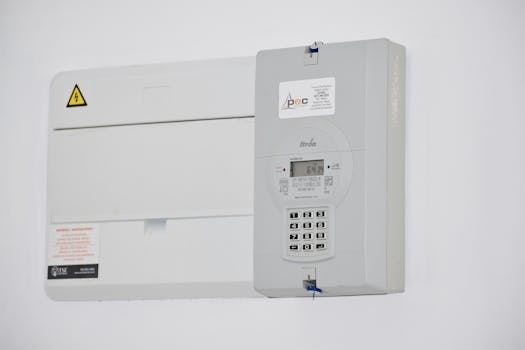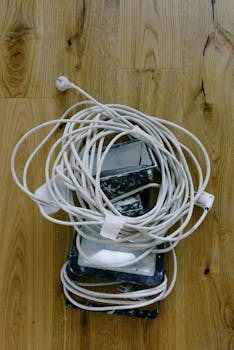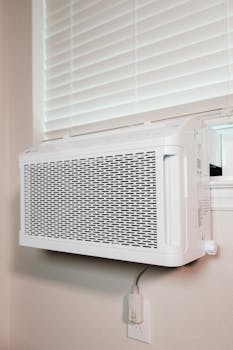Household Economy
Best Tips That Really Extend Life of Appliances at Home
Discover practical, expert-backed habits for extending the life of household appliances. Learn cleaning routines, smart placement, and seasonal maintenance that save time, money, and stress.
Advertisement
Hearing a thump from your washing machine or noticing your fridge runs non-stop can spark worry and expense. Luckily, some surprisingly simple actions can extend life of appliances, helping avoid untimely replacements or costly repairs.
Appliances impact daily comfort, household budgets, and even the environment. When we care for them well, it means fewer headaches, less waste, and greater peace of mind. Extending their lifespan pays off every time they run smoothly.
Let’s explore smart, realistic habits anyone can adopt to extend life of appliances. You’ll see how a bit of routine care rewards you with reliability and savings. Dive in to find the methods that fit your home best.
Routine Tasks Reduce Repairs and Lengthen Appliance Useful Life
Building weekly and monthly rituals around checking, cleaning, and using key features lets you spot small issues before they become big breakdowns. Those rituals keep appliances efficient for years.
Making appliance care a regular part of your cleaning plan lowers surprise costs and stress. Simple tweaks, when done consistently, make major repairs much less likely and let you extend life of appliances.
Check and Clear Vents, Filters, and Traps Regularly
Every appliance with a vent or filter—think dryer, dishwasher, or HVAC—needs occasional attention. Trapped dust, lint, or grease forces the machine to work harder and overheat.
If you say to a family member, “Let’s just vacuum this vent while we’re cleaning,” you’re already increasing airflow and saving energy. This habit extends the life of appliances effortlessly.
Replace or clean filters on a schedule: monthly for some, quarterly for others. Write a simple checklist for the fridge coil, range hood, and HVAC filters, and tack it inside a cabinet door.
Schedule Minor Inspections With Everyday Tasks
Pairing appliance checks with daily chores builds the habit. “When I empty the dishwasher, I’ll always wipe the seal and inspect for leftover gunk,” is one example.
This approach prevents sticky, smelly buildup and catches cracks or leaks immediately. If you link inspections to chores, you save time and money, catching problems before they spread.
Use a visual cue—a magnet or sticker—to remind everyone in the home. Consistency is the real secret to extending the life of appliances year over year.
| Appliance | What to Check | When | Takeaway |
|---|---|---|---|
| Refrigerator | Door seal, condenser coils | Monthly/quarterly | Clean coils with vacuum to prevent overheating. |
| Washing Machine | Hoses, detergent drawer | Monthly | Check hoses for bulges; clean drawer for residue build-up. |
| Dryer | Lint trap, vent hose | Every load/monthly | Clear lint to boost safety and drying efficiency. |
| Dishwasher | Filter, spray arms | Monthly | Clear food particles to avoid blockages and odor. |
| Oven/Range | Burner grates, oven seal | Quarterly | Wipe grime to prevent smoke and uneven heating. |
Proactive Habits That Cut Wear and Tear in Half
Adopting a few daily actions helps you avoid unnecessary strain, letting you extend life of appliances without hassle. Smart behaviors also lower utility bills and prevent annoyances from malfunctioning devices.
Try putting these into practice: Observe if appliances are full but not overloaded, use appropriate cycles for the load, and give every machine “breathing room” by not crowding its vents or intakes.
Mini Check: Follow Manufacturer Settings for Efficiency
Reviewing each appliance’s quick-start guide pays off. Using “quick wash” for bulky bedding or the wrong detergent can prematurely wear out gears, seals, or motors—details easily overlooked.
Skip the temptation to press a shortcut button by default. For example, use the “delicate” setting only for intended fabrics. This prevents fabric snags and keeps the washer running smoothly for longer.
- Use manufacturer’s recommended settings, ensuring long-term appliance health by minimizing stress on components for each specific task.
- Choose load sizes that match machine guidance, avoiding overstress and uneven performance that shortens effective life.
- Double-check detergent or cleaner types before use; wrong products corrode or clog vital internals without visible warning until something fails.
- Allow rested period after a heavy load; consecutive overuse can overheat sensitive electronics and motors, leading to early failure.
- Place every appliance so its vent, coils, or rear panel never touches the wall; proper spacing improves cooling and extends component longevity.
Extra time spent reading the appliance’s quick-start or online manual pays back in years of reliable service and fewer technician visits.
Scenario: Family Laundry Routine That Avoids Overload
Picture one family member tossing a full week’s laundry in at once, stuffing clothes to the brim. You might hear the drum strain, then see suds leak, causing frustration and wasted water.
If you instead split loads—one for towels, another for shirts—you avoid damage and keep everything running better for longer. Copy this: “Let’s just run two smaller loads tonight and not risk a breakdown.”
- Divide laundry by weight class and color to prevent wear on seals and drum balance.
- Shake out clothes first for even cleaning and less lint left behind in filters.
- Use cooler water cycles when possible to cut heat strain and fading.
- Empty pockets to prevent objects from jamming pumps or tearing fabrics.
- Wipe inside drum dry between uses to deter musty odors and lingering moisture.
Try these tips with your next laundry day, and you’ll notice the washing machine is less noisy, more efficient, and needing fewer repairs.
Attention to Placement Minimizes Damage and Boosts Appliance Lifespan
Where you position major appliances in your space can either encourage airflow or contribute to breakdowns from trapped heat and dust. Strategic placement is a surprisingly effective way to extend life of appliances and avoid service calls.
If you install or move a fridge, dryer, or range, always check clearances behind, above, and on the sides. Tuck them too tightly and you’ll see energy bills climb, food spoil faster, or motors start to drone and rattle.
Checklist: Smart Positioning for Longer-Lasting Major Appliances
Follow a practical checklist next move: “I’ll pull out each appliance, vacuum behind, and measure new gaps from wall to back panel; 2–3 inches minimum is my rule.” This habit reduces overheating and accidental cord pinching.
Don’t let cords become pinched or crimped—the next time you sweep, adjust heavy units slightly if the cord looks taut or twisted at either end. Fridge coils especially benefit from open airflow behind and underneath.
For under-sink dishwashers or laundry units, regularly check for pooling water or dampness nearby. Quick fixes can prevent mold that ruins cabinetry and shorten appliance lifespan.
Scenario: Airflow and Clearances in Tight Spaces
Apartment living can force a washer or fridge into snug corners. When installers leave just a sliver of airspace, fans work harder, and the compressor or motor must compensate—the sound is a sure giveaway.
Ask, “Does this look too close to the wall?” You’ll probably see grime and feel heat if it’s too tight. Move appliances out while cleaning, or ask someone for help, to reset proper spacing and prevent strain.
Mark floor tiles around the right position so units aren’t accidentally nudged back flush. That visual cue helps maintain safe clearances as you clean or rearrange furniture.
Seasonal Maintenance: Key Steps for Year-Round Reliability
Spending a few extra minutes each season on targeted maintenance tasks is one of the most reliable ways to extend life of appliances. A seasonal maintenance calendar keeps key devices running at their best through winter chills and summer heat.
Pairing spring cleaning or holiday prep with a quick review of appliances ensures you spot any early signs of wear—a split hose, a frayed cord, or a dusty ice maker—before a holiday or heatwave leaves you stranded.
Mini-Process: Winter Prep and Summer Readiness
Before cold season hits, check outdoor vents for blockages and bring in any window units if possible. Wipe fridge coils and inspect for ice build-up in freezers. “Let’s thaw and clean the freezer during winter break” is a phrase worth repeating.
Summer is a good time to clean refrigerator seal gaskets and brush away cobwebs from outdoor AC units. Clear any debris tucked in dishwasher sprayers too. Set a beginning-of-summer reminder to change water filters and check all hoses.
Write maintenance reminders in your calendar, pairing with tax prep, school vacation, or spring cleaning. Consistency beats effort—it’s these built-in checkpoints that safeguard appliances all year.
Script: Handling Power Surges and Storm Preparations
If you live in a region prone to storms, installing surge protectors or unplugging sensitive appliances before lightning hits can save them from damage. You might say, “Let’s unplug the TV and microwave if it looks like a big storm.”
Have a designated drawer or spot for power strips, extension cords, and surge protectors for easy access. Run a quick visual check after any local outage or brownout; it only takes a second and prevents big headaches.
Document where circuit breakers or GFCI outlets are in the home for fast resets after interruptions. Sharing this with your household means fewer panicked calls or extended downtime during surprise outages.
Gentle Cleaning Routines That Prevent Common Appliance Failures
Daily, weekly, and monthly cleaning habits help appliances work as designed and extend life of appliances without much thought. Dirt, grease, and soap scum may seem harmless at first but sabotage efficiency over time.
Think of routine cleaning like brushing your teeth: letting things build up too long eventually becomes a bigger hassle. A quick wipe-down now saves hours—or even major repairs—later on.
Checklist: Go-To Cleaning Methods for Kitchen Workhorses
Run an empty cycle with vinegar or a specialty cleaner in the dishwasher every month. For the microwave, quickly steam-sanitize by heating a mug of water, loosening splatters for a fast wipe-out with a soft cloth.
Clean refrigerator spills right away. Sticky jams or sauces allow bacteria and mold to spread—use a damp cloth and soapy water for best results. Avoid harsh chemicals that can crack or fade plastic bins.
Don’t forget countertop appliances. Unplug and thoroughly clean inside a toaster or blender with a soft brush, taking care to avoid water inside electrical components. Let them dry fully before reassembling.
Scenario: Refrigerator and Freezer Cleaning Sequence
A busy family may neglect fridge cleaning for weeks. Spills turn crusty, and odors develop. Build a habit—every second Saturday, remove expired leftovers and wipe shelves before adding new groceries.
If time is tight, assign one section of the fridge to each person. Kids can wipe the door bins, another can tackle the crisper drawer. Posting this as a recurring calendar reminder helps everyone buy in.
Use a fresh baking soda box on a shelf to help neutralize any lingering odors between deeper cleans. Change it with the seasons for best effect.
Repair Versus Replacement: Making Smart Decisions for Longevity
Knowing when to call a technician or retire a failing appliance helps ensure you don’t waste money or keep a hazard in the home. When you extend life of appliances, understand which repairs are worth tackling and which signal it’s time to start fresh.
Compare the “50 percent rule”: If a major repair costs more than half of a new unit and the machine is near its average lifespan, replacing usually makes more sense.
Mini-Process: Diagnosing Small Issues Before They Escalate
Always check basics first: Is the plug secure? Is the circuit breaker tripped? A quick test or reset can save an unnecessary service call. Listen for new sounds—rattles, beeps, or hums signal wear.
Run a reset or unplug device for a minute to see if it clears temporary electronic hiccups. If the issue persists, locate the model number and jot down the symptoms to share with a repair expert for faster resolution.
Never ignore burning smells, visible sparks, or water leaks—shut down and unplug before seeking help. These issues require a technician to prevent further damage or hazards.
Checklist: Guidance for Making a Replace-or-Repair Decision
Ask yourself these questions: How old is the appliance compared to expected lifespan? Are replacement parts cheap and available? Does a fix address the root problem or mask a larger one?
Read user discussions or repair guides about your appliance model for specific patterns of breakdown. Budget for upgrades when it’s clear remaining life is less than two years—don’t get stuck with an expensive emergency.
If you hesitate, describe the problem and ask a local technician for a repair quote. Clarifying the next step prevents prolonged downtime and anxiety.
| Appliance | Typical Lifespan | Repairs Worth Doing | Moves to Replace |
|---|---|---|---|
| Refrigerator | 12-15 years | Minor leaks, thermostat settings | Major compressor failure near end of life |
| Dishwasher | 9-12 years | Stuck spray arms, filter replacement | Motor failure with rusted tub |
| Washing Machine | 8-12 years | Belt/slight leaks, timer replacement | Transmission/motor fails after a decade |
| Dryer | 10-13 years | Lint traps, fuses, thermostat replacement | Drum or heating coil issue after 10 years |
| Oven/Range | 13-15 years | Igniter, element replacement | Main control panel or oven insulation failure |
Smart Upkeep Pays Off in Years of Trouble-Free Use
Every habit, from cleaning vents to gentle loading or seasonal checks, shapes how long your appliances serve reliably. When you extend life of appliances, you shrink waste, frustration, and surprise bills.
Spreading tasks across the year turns chores into manageable routines instead of daunting projects. Each time you check a seal, run a cleaning cycle, or reposition a unit for airflow, your investment grows in value.
Let this guide be your blueprint for daily, seasonal, and troubleshooting routines. Over time, your household will run smoother, devices last longer, and you’ll notice real savings—both in wallet and worry.
Frequently Asked Questions
What’s the single most effective thing to extend life of appliances?
Routine cleaning of filters, vents, and gaskets makes the biggest difference for most household appliances. Blocked air or water paths quickly cause overheating, leaks, or worn-out motors. Keeping these areas clear means less effort for the machines and fewer costly surprises.
How do I know if an appliance repair is really worth it?
First, check the age of the appliance and the cost quoted for the repair. If the total cost is less than half of what a comparable new unit costs, and the machine is under eight years old, the repair usually pays off. Always factor in convenience and possible upgrades you’d value.
How should I store appliances I use only seasonally, like an ice maker or air conditioner?
Clean and dry every removable part, coil, or filter before storing. Use a breathable cover—not plastic—to avoid moisture buildup and mildew. Store indoors in a dry space so weather and garage pests can’t cause hidden damage or rust while the appliance sits idle.
Should I use third-party parts or always get manufacturer-recommended spares?
The safest option is always manufacturer-approved parts, especially for electronics, moving parts, or seals. Off-brand options may work, but improper fit or material quality risks further problems. Use reputable sources and check for warranties when using non-OEM supplies.
When is a service professional required, and when can I DIY appliance fixes?
Simple tasks—like cleaning, replacing filters or bulbs, or tightening obvious connections—are usually safe for DIYers. More complex repairs, like anything involving sealed parts, refrigerants, or electrical systems, are best handled by certified pros. If in doubt, always unplug before attempting anything.





